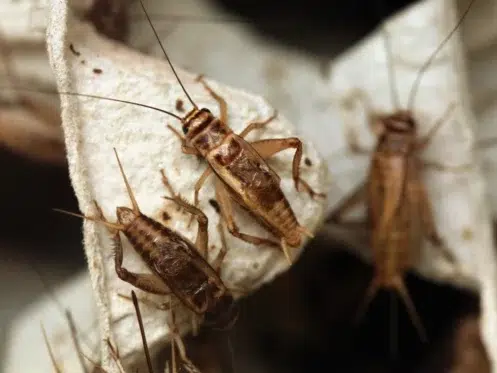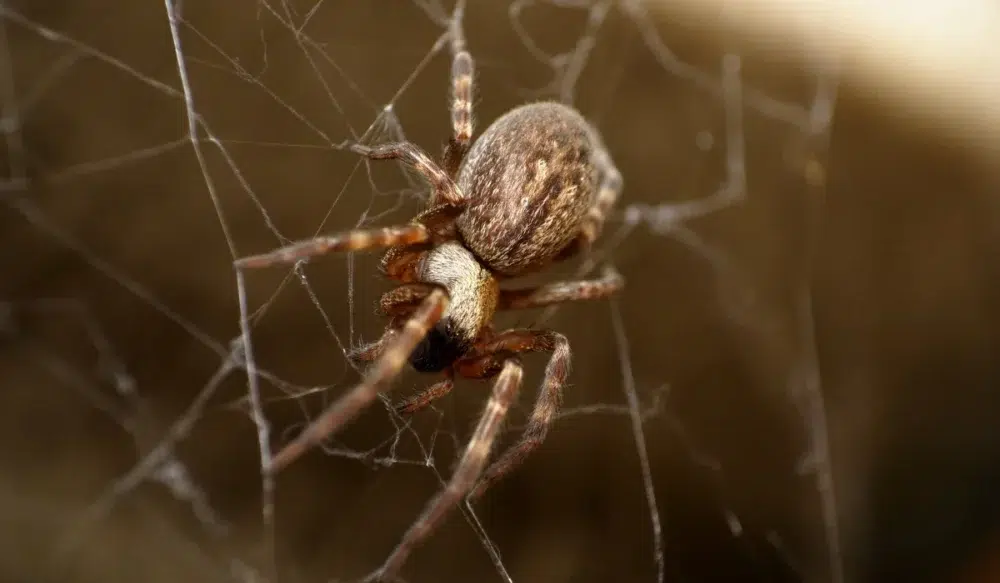If you’ve been losing sleep because of the constant chirping sounds of crickets inside your home, you’re not alone. Many homeowners in Arizona deal with cricket infestations, especially during the warmer months.
House crickets and field crickets are notorious for sneaking indoors through small gaps and crevices, where they can multiply quickly.
If you’ve been wondering, Why are crickets in my house? and How do I get rid of crickets?, the first step is figuring out how they got inside in the first place.
Key Takeaways
- Crickets get inside through small gaps, cracks, vents, and other openings around your home.
- Moist areas, woodpiles, and standing water attract crickets and make infestations more likely.
- Crickets can sneak in on stored items and pet food, and they’re also attracted to bright outdoor lights.
- Sealing entry points, using traps, reducing moisture, and calling pest control can help get rid of crickets.
Small Gaps and Crevices
Crickets have long antennae and slender bodies, making it easy for them to squeeze through the smallest openings around your home. Gaps under doors, cracks in baseboards, and openings around window sills all serve as entry points for these pests.
House crickets and camel crickets often take advantage of these weaknesses, quickly turning a minor issue into a full-blown cricket infestation.
Sealing these crevices with caulk and weather stripping can help keep them out.
Foundation Cracks and Crawl Spaces
Many homeowners don’t realize that their home’s foundation can be a prime entryway for crickets. Cracks in concrete or gaps around crawl spaces allow crickets, along with centipedes and even cockroaches, to sneak inside.
Camel crickets and cave crickets, in particular, prefer these dark and moist areas. Using a dehumidifier in crawl spaces and sealing foundation cracks can make these spaces less inviting.
Vents and Utility Openings
Crickets often enter through small openings where utility lines, faucets, and heaters connect to your home. Poorly screened vents can also be a problem, allowing house crickets and field crickets to get inside.
Checking these openings and sealing them with fine mesh or caulk is a great DIY cricket control step.
Mulch, Woodpiles, and Tall Grass
If you have mulch, woodpiles, or tall grass near your house, you might be unknowingly inviting crickets inside. These hiding places provide moisture and protection from predators, making them an ideal breeding ground.
When they gather near your home, it’s only a matter of time before they slip inside through open doors or windows. Keeping mulch and wood piles at least a few feet away from your foundation can reduce the chances of a cricket problem.
Garage Doors and Baseboards
Garage doors with gaps at the bottom are another common entry point for crickets. Once inside, they can easily find their way into the main house through baseboards and crevices.
Installing a door sweep and sealing baseboards can prevent them from using your garage as an entryway.
Moist Areas and Standing Water
Crickets thrive in moist environments, so any standing water or excess humidity in your home can attract them. Leaky faucets, poorly drained gutters, and damp basements create the perfect conditions for them to multiply.
Fixing leaks, improving drainage, and using a dehumidifier in moist areas can help with cricket control.
Stored Items and Pet Food Bring Crickets Inside
Crickets sometimes hitch a ride into your home on stored items like cardboard boxes, gardening tools, or pet food bags that have been sitting outside. They can also infest laundry baskets and other household items left near entry points.
Checking these items before bringing them inside can prevent a cricket infestation.
Outdoor Lights Attract Crickets to Your Home
Like many insects, crickets are drawn to bright outdoor lights.
Homeowners who leave porch lights on at night often attract large numbers of crickets, which then crawl toward nearby entry points.
Switching to yellowish-brown or warm-colored bulbs and keeping unnecessary lights off can reduce the number of crickets swarming near your home.
Is It Time to Call a Pest Control Professional?
Some homeowners may attempt DIY cricket control, but if the infestation is severe, calling a professional exterminator is often the best option. At Green Home Pest Control, we specialize in identifying and sealing entry points to keep crickets out for good.
With tailored pest management, our team effectively uses eco-friendly solutions that are safe for your family and pets. Plus, our regular pest control services can help protect your home from other pests like termites, cockroaches, and grasshoppers.
Give us a call today, and we’ll make sure these noisy pests stay outside where they belong!




